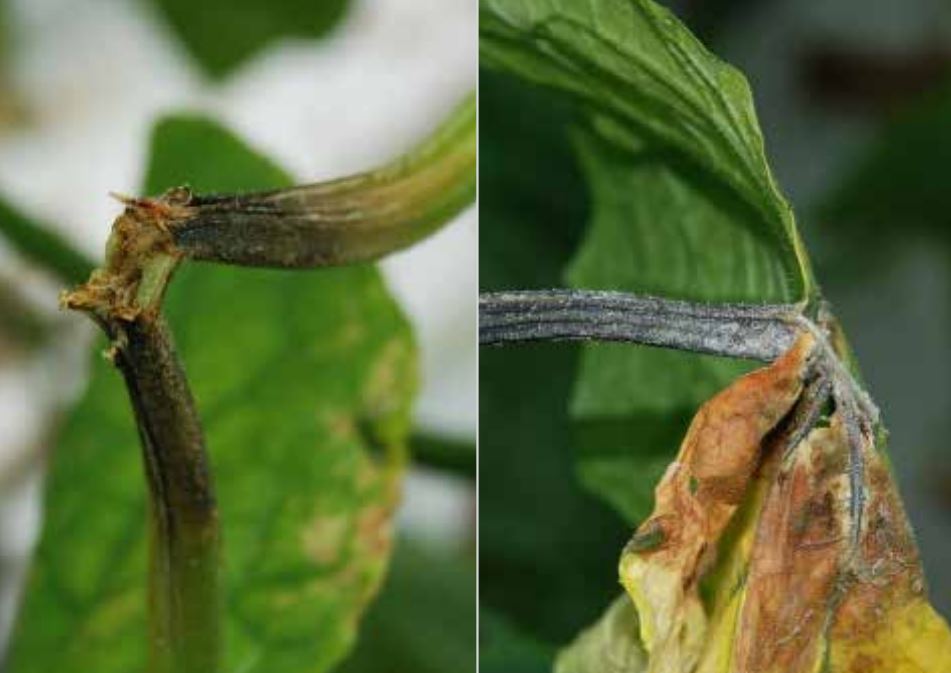Please click here to access the main AHDB website and other sectors.
- Home
- Knowledge library
- Symptoms of Mycosphaerella on cucumber
Symptoms of Mycosphaerella on cucumber
This information was last updated in 2015.
Find out what symptoms to look for to identify Mycosphaerella in you crop.
Overview of symptoms
Mycosphaerella can infect stems, leaves, growing tips, flowers, and fruit.
Stem infection usually occurs initially at the base of the plant, but this often goes undetected.
Other parts can be infected without visible stem infection.
Flower infection leads to external and internal fruit rot.
External fruit rot
External fruit rot (caused by infection of damaged fruits) occasionally appears in the crop but is easily identified.
Such fruit is unmarketable and should be removed from the crop immediately, as it provides an air-borne infection source for secondary disease spread.
How to spot the disease
Stem infection
Stem infection can be recognised as brown lesions with black specks (fruiting bodies).
There are two types of fruiting body:
- pycnidia – liberate sticky conidia (vegetative or asexual spores) which are mechanically transmitted on hands, knives, shoes etc.
- perithecia – liberate air-borne ascospores (sexual spores) for longer distance dispersal of the pathogen. Amber-brown gum drops are produced on the surface, hence the name gummy stem blight.
Stem symptoms can be distinguished from grey mould caused by Botrytis cinerea by the black specks, and the presence of the amber gummy exudate.
Mycosphaerella is found at the stem base, and higher up the stem on fruit stubs. It can also be seen on wounds as a result of pruning and harvesting operations. Spores can be spread on hands, knives, etc.
Severe stem infection may cause the plant to die off above the lesion.
Stem infection by Mycosphaerella: left - dry lesion at stem page; centre - wet stem base lesion; right - stem lesion higher up on the stem. Images © of Derek Hargreaves.
On leaves
On leaves, the fungus causes grey-brown lesions, usually starting at the leaf margins. Sometimes it occurs where the leaf is wounded on the petiole or at the junction between petiole and leaf lamina.
The lesions expand, destroying the whole leaf. The fungus may grow down the petiole into the stem.
Lead infection startin at the petiole or the point of connection between thhe petiole and leaf lamina. Images © of Derek Hargreaves.
At growing tip
At the growing tip, infection causes malformation or distortion of the developing leaves. They sometimes have a ‘burnt out’ appearance.
Flower infection
Flower infection leads to internal fruit rot.
Infected fruits usually show no external lesions. However, they may curl up slightly during growing and ripening.
At harvest, the tip of the fruit at the flower end may show a slight indentation or ‘tapering’.
Fruit
Cutting the fruit lengthways reveals a brown discolouration of the fruit tissue.
This is not always very noticeable and is sometimes not found until the fruit has been shrink-wrapped and marketed.
Such rejection of affected fruit by retailers can be costly.
Useful links
Find more information and resources on cucumber
Download a PDF version of the original factsheet on Mycosphaerella
Authors
This information was originally authored by Aleid Dik and Martin McPherson



